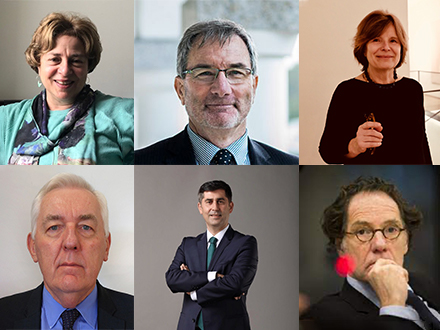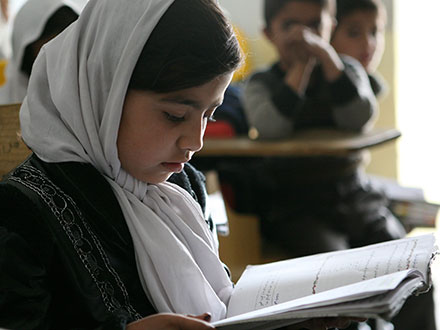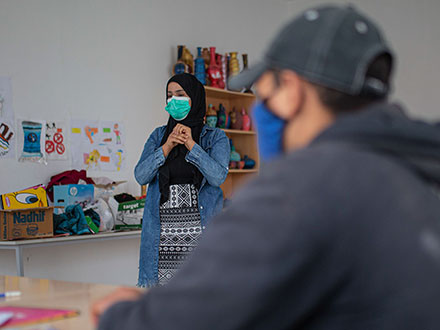Is it really the time to talk about the resurrection of Daesh?
by Göktug Sönmez
Until two years ago, both in academic and political circles, Daesh-related discussions were mostly focused on what would happen to foreign terrorist fighters when the group dissolved: how they should be tried, punished, and how they should be rehabilitated and reintegrated.
However, while these topics kept their popularity to a certain extent since 2018, discussions surrounding Daesh have increasingly shifted towards the group’s potential resurrection.
In fact, with the emergence of the COVID-19 pandemic and the downsizing of the US military engagement, Daesh has been able to find a perfect storm to regroup and organize as demonstrated through the increase of different activities, further advancing the group’s impact. These mainly include the increase in attacks, a territorial stretch from Syria to Iraq, and development in their approaches and dissemination of propaganda material.[1]
Considering these elements, it seems that Daesh has been in some ways more active than the last two years, however, a full-throttle comeback is far from realistic at the time being. This blog post will look at Daesh’s recent activity and argue that governments should take a balanced approach not to overestimate or underestimate the potential return of Daesh.
Putting the Increasing Levels of Activity in the Right Context: Between a Full-Throttle Resurrection and Turning a Blind Eye
There are a number of factors that played into the hands of Daesh and other insurgencies in Iraq and Syria. Firstly, the former US President Donald Trump’s commencement of withdrawal of US military troops in 2018 from parts of Syria[2] provided Daesh fighters an opportunity to escalate and increase their presence and attacks. Only in 2020, Daesh carried out at least 286 attacks in various parts of Syria.[3] Secondly, following the military strike in 2020, which killed Iran’s Islamic Revolutionary Guard Corps (IRGC) major general Qasem Soleimani, the US changed its military strategy in Iraq into a more indirect one aimed at diminishing the US soldiers’ security risks on the field without compromising Iraqi security vis-à-vis non-state armed actors within the country. Also, the coalition forces joined the Iraqi army and SDG only for the attacks on Daesh for very critical operations since the outbreak of the pandemic. However, the latest attacks in Baghdad could be seen to indicate that the strategy may have failed.[4] It is estimated that Daesh still has at least 15,000 active armed fighters in Iraq and Syria alone, putting aside the group’s presence in other regions from North Africa to Central Asia and the manpower of its affiliated groups all around the globe.[5] Furthermore, the overstretch and distraction of the security forces due to the COVID-19 pandemic; the ongoing instability in Syria and Iraq where protests against nepotism, corruption, and a broken legal and economic system resulted in a tumultuous political scene – are all additional factors that play a part in the recent recovery of the group. In addition, the ideology of the group can provide the needed push towards radicalization in such fertile ground
How did Daesh benefit from the COVID-19 period?
Terrorist groups benefit from social tension, insecurity, and rage; they capitalize on the fault lines in the society such as political grievances, social and economic problems, and discrimination. Since the beginning of COVID-19, Daesh did not shy away from its efforts to make its presence “meaningful” in Iraq. On the contrary, taking advantage of the pressure created by the disease on the security forces and state mechanisms, it amplified and extended its attacks throughout a larger territory. Daesh has been leveraging the distraction of the pandemic and global lockdowns in order to advance the process of regrouping and empowerment, developments that had begun even before the pandemic.
There is no doubt that Daesh has closely followed the developments of the US troops leaving their bases in K1, Kayyare, Takuddum, Kısık, and Mosul in March 2020, and possibly these developments played a part in the mounting number of attacks in the first quarter of the year. In fact, Daesh claimed responsibility for 260 attacks in the month of Ramadan (April 24 through May 23), with more than 400 Iraqi security officers killed as a result,[6] showing that it has intensified its terror attacks in the spring and summer of 2020, while, it used the winter and fall seasons for re-grouping, damage checking, capacity improvement, and planning their activities for 2021.
Comparing terror groups’ activities with their activities in the same period of the previous year, both in terms of quality and quantity, is one way of assessing their impact. In terms of methodology, this sort of comparison is better than making a comparison with the previous month or previous quarter, since many seasonal factors relate to the ability of terror groups to carry out attacks (e.g. weather, holy days). Recently, CTC Sentinel published a study that applies this methodology to a quite thorough database. The research noted that the quarterly average number of attacks by the group in Iraq in 2017 was around 1600, which went down to 500 in 2018. According to the same database, 292 attacks were carried out in the first quarter of 2019, while, during the same period of 2020, this number rose to 566.[7] There is a visible increment of attacks in 2020 compared to the period 2018-2019, however, both figures are quite behind 2017’s quarterly average. This difference might be due to the military and tactical changes as well as to the impact of the pandemic over security forces as mentioned in this piece. These numbers, rather than signaling a robust return, underline a comparatively modest effort for a comeback by the group which remains one of the most active non-state armed actors on the ground, requiring continuing scrutiny from the local, regional and global security actors.
Besides gaining from the US troops’ redeployment, Daesh also benefited from the power vacuum in Syria, and the ongoing protests in Iraq, and the security vacuum left by the reduced activity of the security forces due to COVID-19 in both countries. As a result, Daesh had the opportunity to regroup and increase the frequency of its attacks, which, so far, does not trigger a change in the US military strategy involving the revision of military bases, the number of soldiers deployed to the region, and even diplomatic representation. However, it is crucial to view the increase in attacks in the right context and keep a healthy balance between exaggeration and indifference.
The group also showed an inclination to use its attacks for propaganda purposes, following the footsteps of Freiheit’s well-known “propaganda by deed”[8] which discusses the psychological impact on society. The attack that killed two militants from the Iran-supported National Defense Force in Syria on April 7,[9] the killing of 10 Hashdi Shabi militants on May 1, 2020, and the conflict that resulted in the deaths of 2 US Marines[10] were not only aimed at reminding the stark contrast between “us” and “others,” but also at showing that the group is still standing and active.
In terms of its narrative, the group exploited the pandemic, propagating that it is the manifestation of God’s wrath, to reinforce and legitimize its ideology. Similarly, it continued to use its publication such as Al-Naba to claim that the pandemic was a punishment on China (where they find a common enemy with the far-right groups in their rage against China even though for quite different reasons) for its oppression of Muslims, that it was a punishment on Shias in Iran, and on “Crusaders in the West.” [11] In addition to this strategy aimed at recruiting new followers, Daesh also employed its communications tools to incite lone wolf attacks on pandemic-weakened states.
Interestingly, despite these efforts, the comparison between the group’s current and the pre-2019 propaganda methods suggests that instead of “professionally prepared” publications in “multi-language” online outputs, which were employed during Daesh’s apex, now, the organization opts for simpler and faster messaging applications and fewer periodical publications. The two combined may reveal a new and smaller propaganda team which makes perfect sense after the loss of key personnel within the IT and propaganda departments. However, this could also be intended as a careful calculation to gain maximum results with minimum effort. The use of these tools so far concentrates mostly on demoralizing the enemy with multiple attacks that will result in casualties, even if minor, and using those attacks to encourage more attacks. The group makes extensive use of disinformation and propaganda to consolidate its online existence and reinforce its offline presence,

Another factor, which is almost as important as the comparison of attacks committed by the group in the last few years, is the situation and future of the al-Hol and Roj camps which have consisted of a total of more than 70,000 people during its peak including Daesh members and their families with children.[12] Authorities are trying to formulate ways to ensure necessary controls for the possible travels of foreign terrorist fighters (FTFs), to determine the legal course of action for those that return to their home countries, and to prevent the group from taking advantage of the problems in the political landscape. However, the fact that both Daesh members and their families live in those camps, with existing conditions for radicalization, will no doubt have important, long-term, and significant effects on the debates about the potential reemergence of the group. There has been recent evidence of funds transfers from Daesh to families in economic need in exchange for their support,[13] and it seems that the local community is well aware of the amount of money involved in bribing local staff to smuggle Daesh supporters out of the camps.[14] The conditions and nature of these camps might dramatically repeat the experiences of Bucca and Abu Ghraib and generate the next generation of like-minded terrorists.[15]
Conclusion
Taking into account Daesh’s activity during the COVID-19 pandemic, it is possible to conclude that the group is still active in Syria and Iraq and it continues to sustain its global presence with supporters emerging internationally. The group is still both a global and regional threat but, despite its recent recovery, Daesh has not yet managed even to return to its 2017 activity levels.
From a strategic point of view, it is clear that the threat of Daesh has the potential to grow locally and internationally, however, it is unlikely that it will succeed in reestablishing a state-like organization in the foreseeable future. The group will maintain its base in Syria and Iraq while its smaller and more autonomous cells will carry out terrorist attacks in different parts of the world as demonstrated by recent attacks in South-East Asia.[16] The attacks will likely have limited budgets and will be less impactful in terms of victims.
Therefore, instead of claiming that Daesh is reborn today with its known goals and structure, it would be more realistic to suggest that Daesh 2.0 has emerged. It is characterized by short to mid-term ambitions, restricted budget, more autonomous and agile cells due to lesser units, and a strategy focused on riots-terrorism rather than building a state. In this way, Daesh has recalibrated, scaled-down its strategic goals, revised its tactics in line with these new goals, and it is now leaning more towards a decentralized structure.
In light of these developments, it is important to carefully monitor the increase in the number of attacks, the new methods, and meaningful patterns especially comparing the Daesh of 2012-2014 and this new form, without losing the touch with reality that especially after the coalition’s presence on the field and Turkey’s cross-border operations in the recent years and thus the two are quite different from each other. The group is in the process of “making a comeback,” but in a form which is quite different in capacity and tactics as we know it at least in the short-term.
References
[1] “Gayle Tzemach Lemmon” ISIS is using coronavirus to rebuild its terrorism network in Iraq and Syria, NBC News, 28/5/2020; Richard Sisk, “ISIS Took Advantage of COVID-19 Restrictions to Ramp Up Attack in Iraq, Report Finds”, Military.Com, 5/8/2020, https://www.military.com/daily-news/2020/08/05/isis-took-advantage-of-COVID-19-restrictions-ramp-attack-iraq-report-finds.html; Louisa Loveluck and Mustafa Salim, “ISIS exploits Iraq’s coronavirus lockdown to step up attacks”, Washington Post, 8/5/2020; Joseph Hincks, “With the World Busy Fighting COVID-19, Could ISIS Mount a Resurgence? “, Time, 29/4/2020; Michael Knights and Alex Almeida, “Remaining and Expanding: The Recovery of Islamic State Operations in Iraq in 2019-2020”, CTC Sentinel, 13:5 (2020), https://www.ctc.usma.edu/remaining-and-expanding-the-recovery-of-islamic-state-operations-in-iraq-in-2019-2020/.
[2] “Syria’s UN ambassador calls on US to withdraw toops,’stop actos of aggression,” Middle East Eye, January 21, 2021, https://www.middleeasteye.net/news/syria-ambassador-un-calls-us-withdraw-troops-stop-acts-aggression.
[3] Gregory Waters, “ISIS in Syria: 2020 in review,” Newlines Institute, February 10, 20201, https://newlinesinstitute.org/isis/isis-in-syria-2020-in-review/.
[4] Joseph Haboush, “ISIS claims attack inside Iraq’s capital of Baghdad, US says terrorist threat remains,” Al Arabiya News, January 22, 2021, https://english.alarabiya.net/News/middle-east/2021/01/22/ISIS-claims-attack-inside-Iraq-s-capital-of-Baghdad-US-says-terrorist-threat-remains.
[5] “IS ‘caliphate’ defeated but jihadist group remains a threat”, BBC News, 23/3/2019.
[6] David Rose, “ISIS launches 260 Ramadan attacks”, The Times, 25/5/2020.
[7] Knights and Almeida, “Remaining and Expanding: The Recovery of Islamic State Operations in Iraq in 2019-2020”.
[8] Arthur H. Garrison, “Defining terrorism: philosophy of the bomb, propaganda by deed and change through fear and violence”, Criminal Justice Studies, 3 (2004), p. 259-279; Johann Most, “Action as Propaganda”, The Anarchist Library, https://theanarchistlibrary.org/library/johann-most-action-as-propaganda.
[9] “ISIS’s Resurgence in Syria Amid the Coronavirus Outbreak”, MS Risk, 6/5/2020, http://msrisk.com/uncategorized/isiss-resurgence-in-syria-amid-the-coronavirus-outbreak/.
[10] Sam Heller, “When Measuring ISIS’s “Resurgence”, Use the Right Standard”, International Crisis group, 13/5/2020.
[11] Joseph Hincks, “With the World Busy Fighting COVID-19, Could ISIS Mount a Resurgence? “, Time, 29/4/2020
[12] Jeff Seldin, “Islamic State Families to Be Cleared from al-Hol Camp “, VOA News, 5/10/2020, https://www.voanews.com/middle-east/islamic-state-families-be-cleared-al-hol-camp.
[13] Vera Mironova, “Life inside Syria’s al-Hol Camp”,The Middle-East Institute, 21/02/2021, https://www.mei.edu/publications/life-inside-syrias-al-hol-camp
[14] Ibid.
[15] UNSC, “Twenty-fifth report of the Analytical Support and Sanctions Monitoring Team submitted pursuant to resolution 2368 (2017) concerning ISIL (Da’esh), Al-Qaida and associated individuals and entities”, 27/12/2019; Christian Vianna de Azevedo, “ISIS Resurgence in Al Hawl Camp and Human Smuggling Enterprises in Syria: Crime and Terror Convergence?”, Perspectives on Terrorism 14:4 (August 2020): 43-63; Alexandra Brzozowski, “Foreign IS fighters in Northeast Syrian camps – a ‘ticking time bomb’ for Europe”, Euractiv, 9/12/2020; Pilar Cebrián, “Europe’s Reluctance to Take Back ISIS Supporters Could Lead to a New Crisis “, World Politics Review, 27/12/2019; Corey Dickstein, “CENTCOM chief says Syrian refugee camp is a breeding ground for ISIS 2.0 “, Stars and Stripes, 13/8/2020; Jessica Trisko Darden, “ackling Terrorists’ Exploitation of Youth”, American Enterprise Institute, May 2019; Lara Seligman, “In Overflowing Syrian Refugee Camps, Extremism Takes Root”, Foreign Policy, 29/7/2019.
[16] UNSC, Twenty-fifth report of the Analytical Support and Sanctions Monitoring Team submitted pursuant to resolution 2368 (2017) concerning ISIL (Da’esh), Al-Qaida and associated individuals and entities, http://www.undocs.org/S/2020/53
About Hedayah's Blog Series
Hedayah publishes a monthly blog series covering a range of different topics related to counter violent extremism (CVE). These blogs highlight the latest trends and challenges faced by the CVE world and highlight topics that receive less attention in the international CVE space with a unique perspective.
The authors of the blog posts are Hedayah’s staff, Hedayah’s Fellows, and guest experts. The opinions expressed in the blogs are their own and not representative of Hedayah. We hope that these blogs will contribute to the conversation around CVE solutions, and push forward the quest for more research and innovation in the field.










